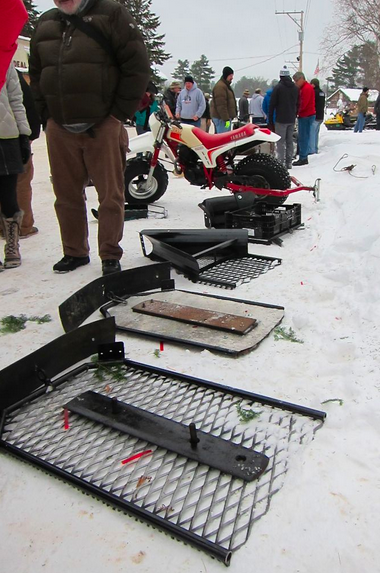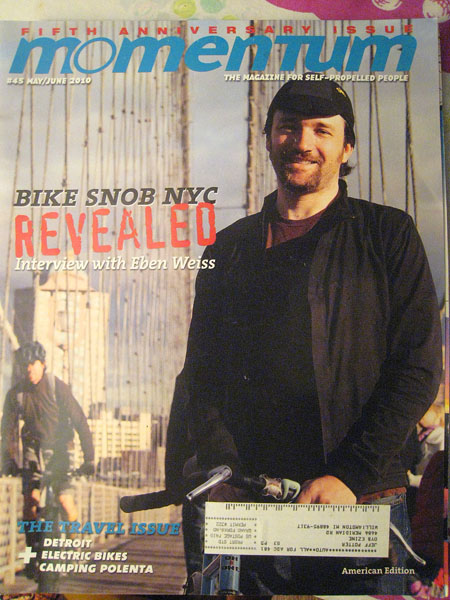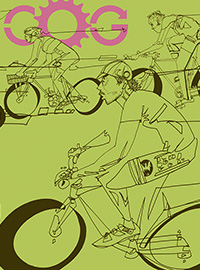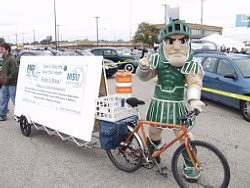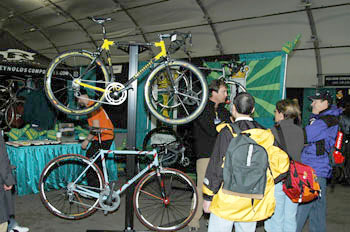Snowbikes are the big new thing. They’re now popular in winter around here. I’m guessing they’re more popular in places with marginal snow conditions. When it’s nasty they can still be fun while skiing might not be possible. When it’s icy, they can keep rolling — altho big studs on a regular mtbike seem to bite better than commercially studded fatbike tires.
I can see their appeal to an extent. They’d be great on sandy trails. Or for biking leafy loam. Or sloppy snow crud.
Otherwise, when there’s snow it seems like skis are best. But many are loving them for snowtrails. I suppose they’re simpler than skiing. And some body types may well fit the cycling mode better than the ski mode.
The IMBA has a good set of trail etiquette rules for winter riding. Their prime directive is “don’t ride on ski trails.”
The main problem is that fatbikes can “U” out a trail quickly in the snow unless it is groomed for them. Sure, a fatty can ride in snow but the next day their trail has set up and created a limited place for other users or even for further riding. So for sustainability the fatties have realized that they need to groom for snow fun. They’ve developed several kinds of singletrack type groomers about 30″ wide. After a trail is groomed with one, and after it sets up, then a low pressure fatty tire won’t dent it. Fatty tires are properly used at very low pressures on snow. The softer the snow the lower the pressure. Down to about 5psi. The policy is “if you leave a dent, lower the pressure until you don’t. If you can’t ride clean, don’t ride.”
A local MTB trail coordinator, Jason, calls riders who leave marks “cutters.” They slice up the trail. Snow slice, mud slice: it’s all bad. Go for sustainable, no impact. Ride firm trails — year-round.
However, for trails where there is no policy the popular fatties are booming in a way that is short-sighted: if a dozen of them ride in soft conditions without grooming then a distinct U-profile trail is created. The next day this will be set up and will tend to channel all users into a single center-line. Skiers, walkers, runners, shoers — none of them move in a “one foot in front of the other” fashion — with feet in a straight line. A trail that’s warped by fatties will have, in effect, a reverse crown. Skis will tend to go into a “surfing” mode and be impossible to handle. Even experts will be thrown off. So the fatties can end up spoiling it for others. What’s more, from their point of view, they’re wrecking their own nest: as their line becomes pronounced they too lose options and become forced into one option which throws them off as well.
I’ve seen posts that assert that if a trail isn’t *officially* groomed then it’s fair game. Again, short-sighted. The IMBA policy doesn’t say “official.” It says “groomed.” Any trail where people are setting and keeping a ski track nice by any means should be considered “groomed.” It doesn’t require a machine to groom a trail.
I’ve also seen posts that say “We’re a very popular new user group so it’s only right that current users share with us. We’re just sharing the resource.” Again, everyone should be able to use a resource unless it impairs someone else’s use.
The U-profile impact happens with enough use on any ungroomed trail. For skiers and hikers before fatties existed if a fresh snowfall didn’t come along in a couple weeks of hard use a trail would become icy and develop a U’ed out center slot or channel. It would gradually lose its separate ski tracks and then its flatness. But this could take a long time. Basically, even hikers didn’t really hurt a trail for skiers until a lot of use had happened. Fatties hugely speed up the erosion process, making it happen in an hour sometimes.
The solution is to create a set-up square tread by grooming, that everyone can use. Or to create separate trails for the fatties. But even then for durable fatty use they’d want to groom their singletrack to keep a flat trail tread and avoid a dread U-profile that would mess them up.
Who’ll do the grooming? Since the fatties are the new kids and the game-changers they’ll need to spearhead this and make sure that their impact doesn’t impair other users. But all trail users can benefit from square trail treads and will naturally support such efforts.
Locally, we have a multi-use trail out at the Rose Lake Wildlife Area. In winter skiers have traditionally been catered to by other users, with walkers walking to the outsides of the trail and skiers making center tracks. It’s worked out for decades. This year the fatbikes showed up big-time. After a nice snowfall and well-packed ski trail about 20 riders had an evening outing. The next day the trail was basically unusable for others. With our low snowfall winter and warm temps that snowpack got eliminated in a couple days anyway. But after another such outing the trail would not have been ridable by snowbikes either. Nobody in this area has yet taken the lead in public relations for the new bikes or their impact.
I like to note that mtbikes are actually nonconforming users at Rose Lake. They are tolerated until complaints might be made.
There is a dominant statewide mtbike group with a chapter here. It remains to be seen what they’ll do or how their organizational health is at this point. I’m not familiar with their current climate.
Snowbikes would like access to another local trail system at Burchfield County Park that has official ski grooming but also has actual mtbike trails built into the network. At this point officials don’t allow snowbiking due to concerns about riders straying onto ski grooming. My impression is that if local bike leadership could demonstrate success with the Rose Lake multi-user situation that this would go a long way to having officials trust snowbike behavior in other parks.
Trail culture seems to be changing in our region. Park officials seem to acknowledge that trails are a majorly growing venue for park use by all demographics while ballsport fields have limited usage. They also seem very willing to engage with leadership from trail user groups. Stakeholder partnerships seem like the way of the future. Let’s see if the public rises to the occasion.
